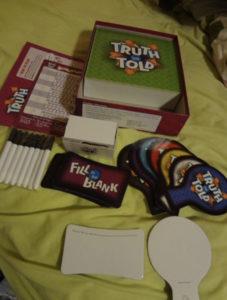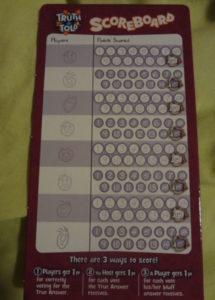
Truth be Told is a “party game” that has similar mechanics to Never Have I Ever, Most Likely To, and my team’s game: Truth’s Up! All these games are designed for the players to get to know each other more. The core premise of all these types of games is that players vote and guess if a specific player, let us call them the host player, has done, will do, or is capable of a certain action. Then based on what the main player has done, and the other players have done, there is a discussion.

In terms of mechanics, what makes Truth be Told different from other popular party games is the mechanic that the game is not yes or no, and the players must think of the extra bluff mechanic of the game. The non-host players write down bluff answers to the same question on blank cards. All the players then proceed to pass their blank cards to the host. The host shuffles and removes the duplicate cards, giving it back to the players that wrote it face down (note: the host can choose whose duplicates to remove). Afterwards, when all answers are unique, the host rereads the entire Truth be Told Question aloud, and one-by-one, reads aloud each player’s Fill in the Blank Card, keeping the player’s identity a secret. After the Host reads all answers, all players vote on which answer they think is the True Answer by secretly writing that answer on their respective Paddles. Players cannot vote for their own answer. When all votes have been made, the player to the host’s left reveals her vote by turning over her Paddle and announcing it aloud.

I did one playtest of this game. One frequent problem that came up was that the host would stumble over the answers, which would give away which one’s were bluffs – not his. While this was not a problem in this playtest, the host player could intentionally stumble over answers to give away which cards are bluffs. Another potential abuse is that the host player looks through the cards in search for duplicates; the player gets to choose The whose duplicates to send back, so the player could easily target a specific player, if necessary.
Overall, it is a fun game. I believe the color and graphics of the cards reinforce the fun atmosphere of the game! If I play this game again, then I would likely only want to play the game with close friends instead of acquaintances. I would also remove the rule about no duplicates to not only remove the potential abuse but also the time-consuming aspect of returning to duplicate cards to the player.


